Tag Archives: BOEM
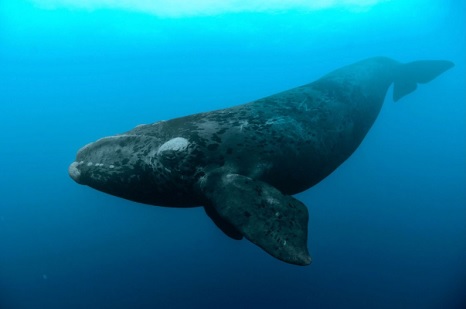
OFFSHORE WIND AND WHALES – A collection of articles from fisherynation.com By Jim Lovgren
After over forty-five years as a commercial fisherman out of Point Pleasant NJ, I sold my boat the Shadowfax, and retired, moving to California. My experience as a fisherman began in the early 1970’s, and I observed and learned an encyclopedia of knowledge concerning fishing, the environment, and fishery management, including politics. As I observed the continuing massacre and the lies denying them by government and media puppets, I under took an effort to expose the truth concerning offshore wind. The following articles are listed in order of their appearance in Fisherynation.com, and are best understood by reading them in order. Just click on the title of an article you’d like to read. more, >>click to read<< 15:09
NOAA/NMFS Ignores Dangerous Sound Levels from Pile Driving – By Jim Lovgren
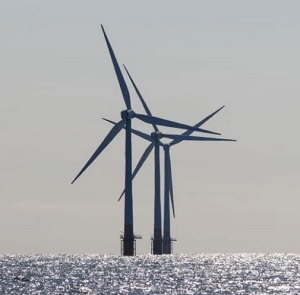 A new recently released report from Rand Acoustics, LLC scientifically documented that the stated sound levels created by the pile driving of wind turbine stanchions into the seafloor is much louder than the NOAA approved levels. In a study dated November 2, 2023, the researchers used acoustic listening devises to record the underwater sounds being created from piledriving by the crane ship “Orion” in the Vineyard wind BOEM lease area OCS-A 0501 southwest of Nantucket Island. Prior to this research, Rand Acoustics documented the underwater sound levels being produced by some of the research vessels using sonar and seismic devises to examine and document the seafloor prior to turbine construction. This research proved that the sound levels produced by these research vessels exceeded the stated sound levels approved by NOAA/NMFS to protect marine mammals and resulted in the documentary film “Thrown to the wind”. more, >>click to read<< 11:28
A new recently released report from Rand Acoustics, LLC scientifically documented that the stated sound levels created by the pile driving of wind turbine stanchions into the seafloor is much louder than the NOAA approved levels. In a study dated November 2, 2023, the researchers used acoustic listening devises to record the underwater sounds being created from piledriving by the crane ship “Orion” in the Vineyard wind BOEM lease area OCS-A 0501 southwest of Nantucket Island. Prior to this research, Rand Acoustics documented the underwater sound levels being produced by some of the research vessels using sonar and seismic devises to examine and document the seafloor prior to turbine construction. This research proved that the sound levels produced by these research vessels exceeded the stated sound levels approved by NOAA/NMFS to protect marine mammals and resulted in the documentary film “Thrown to the wind”. more, >>click to read<< 11:28
East End fishermen uneasy over wind farm South Fork Wind
 Late last year, Gov. Kathy Hochul called South Fork Wind, which is projected to eliminate hundreds of millions of tons of carbon emissions annually, a “major milestone” in the state’s “nation-leading effort to generate reliable, renewable clean energy. “But at least one East End community remains staunchly opposed to wind farms: commercial fishermen — who say that the massive, 50-story turbines could irreparably damage the local marine ecosystem and displace them from areas they’ve fished for decades or even generations. more, >>click to read<< 08:12
Late last year, Gov. Kathy Hochul called South Fork Wind, which is projected to eliminate hundreds of millions of tons of carbon emissions annually, a “major milestone” in the state’s “nation-leading effort to generate reliable, renewable clean energy. “But at least one East End community remains staunchly opposed to wind farms: commercial fishermen — who say that the massive, 50-story turbines could irreparably damage the local marine ecosystem and displace them from areas they’ve fished for decades or even generations. more, >>click to read<< 08:12
Oregon seafood industry calls on Gov. Tina Kotek to halt offshore wind energy development
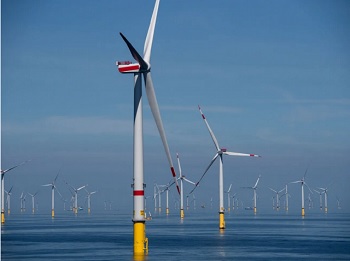 A coalition of independent fishing boat operators, seafood companies and industry groups is calling on Gov. Tina Kotek to ask the federal government to stop a planned auction for floating wind energy projects off the Oregon Coast. In a letter to Kotek on Tuesday, the more than 100 signatories said she should stop the U.S. Bureau of Ocean Energy Management from moving forward with its plan to auction offshore wind site leases until the state has finalized its own roadmap for offshore wind development. “We’re saying no auction until the roadmap is complete,” said Heather Mann, executive director of the Newport-based Midwater Trawlers Cooperative, which signed the letter. more, >>click to read<< 12:43
A coalition of independent fishing boat operators, seafood companies and industry groups is calling on Gov. Tina Kotek to ask the federal government to stop a planned auction for floating wind energy projects off the Oregon Coast. In a letter to Kotek on Tuesday, the more than 100 signatories said she should stop the U.S. Bureau of Ocean Energy Management from moving forward with its plan to auction offshore wind site leases until the state has finalized its own roadmap for offshore wind development. “We’re saying no auction until the roadmap is complete,” said Heather Mann, executive director of the Newport-based Midwater Trawlers Cooperative, which signed the letter. more, >>click to read<< 12:43
Fishing industry reels over Biden’s destructive wind farm plan: It’s ‘coming at us from every direction’
 Time is running out for fishermen and women in the Northeast who fear their industry is being put at risk by the Biden administration’s renewable energy agenda. “Ground fishermen, lobstermen, whatever you are, you’re under the microscope right now, and it just seems to be something coming at us from every direction,” New England Fishermen’s Stewardship Association (NEFSA) COO Dustin Delano said on “The Big Money Show” Monday. “And with this offshore wind agenda out there to attempt to fight climate change,” he continued, “it’s almost like environmentalists and different folks are willing to destroy the environment to protect the environment.” Video, photos, more, >>click to read<< 08:52
Time is running out for fishermen and women in the Northeast who fear their industry is being put at risk by the Biden administration’s renewable energy agenda. “Ground fishermen, lobstermen, whatever you are, you’re under the microscope right now, and it just seems to be something coming at us from every direction,” New England Fishermen’s Stewardship Association (NEFSA) COO Dustin Delano said on “The Big Money Show” Monday. “And with this offshore wind agenda out there to attempt to fight climate change,” he continued, “it’s almost like environmentalists and different folks are willing to destroy the environment to protect the environment.” Video, photos, more, >>click to read<< 08:52

Massachusetts fishermen say feds are hypocritical in Gulf of Maine wind energy designation
A move to designate two million acres in the Gulf of Maine as a hub for wind energy is snagging a sharp hook from Massachusetts fishermen who say the development overlooks risks to the North Atlantic right whale. A handful of Bay State fishermen advocacy groups are teaming with counterparts from across New England in criticizing the Biden administration’s plans to industrialize the area off the coasts of Massachusetts, New Hampshire and Maine. Fishermen, however, say the industrialization of the two-million-acre area is “flatly inconsistent with a policy of endangered species protection.” “Fishermen are disheartened that the WEA designation favors foreign energy developers over marine mammal protection,” the Gulf of Maine Fishing Associations said in a statement last week. “This preferential treatment is in stark contrast to the federal government’s aggressive campaign to burden commercial fishing needlessly with crushing restrictions to protect whales.” more, >>click to read<< 08:43
Federal Government Picks New England Offshore Wind Power Site, Drawing Cheers and Questions Alike
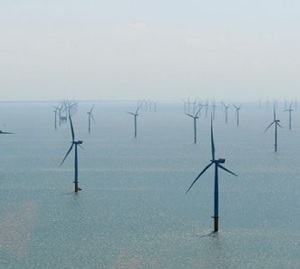 The federal government on Friday designated a large area off the New England coast for offshore wind production development, setting the stage for a possible lease sale within the Gulf of Maine. The U.S. Bureau of Ocean Energy Management said in a statement that the New England zone, which renewable energy advocates have identified as crucial for the growth of wind power, “avoids important areas for lobster fishing, North Atlantic right whale habitat, and other important fishing areas and habitats.” The move came a day after the country’s first commercial-scale offshore wind farm opened off Montauk Point, New York. Environmental groups cheered the announcement, but some members of the commercial fishing industry, which has opposed wind development in areas where they trap lobsters, said they still have concerns about locating offshore wind in the area. more, >>click to read<< 12:23
The federal government on Friday designated a large area off the New England coast for offshore wind production development, setting the stage for a possible lease sale within the Gulf of Maine. The U.S. Bureau of Ocean Energy Management said in a statement that the New England zone, which renewable energy advocates have identified as crucial for the growth of wind power, “avoids important areas for lobster fishing, North Atlantic right whale habitat, and other important fishing areas and habitats.” The move came a day after the country’s first commercial-scale offshore wind farm opened off Montauk Point, New York. Environmental groups cheered the announcement, but some members of the commercial fishing industry, which has opposed wind development in areas where they trap lobsters, said they still have concerns about locating offshore wind in the area. more, >>click to read<< 12:23
Biden administration sued over Virginia offshore wind farm approval
 A conservative think tank on Monday sued the Biden administration in an effort to reverse approval of what would be the largest offshore wind farm of its kind. The Heartland Institute filed the suit with the Committee for a Constructive Tomorrow, a nonprofit that advocates for an economically libertarian approach to environmental action and has denied the existence of human-caused climate change. The lawsuit, filed in the U.S. District Court for the District of Columbia, seeks to reverse the National Marine Fisheries Service (NMFS) Bureau of Ocean Energy Management’s (BOEM) approval of Dominion Energy’s 176-turbine wind project offshore Virginia. more, >>click to read<< 08:30
A conservative think tank on Monday sued the Biden administration in an effort to reverse approval of what would be the largest offshore wind farm of its kind. The Heartland Institute filed the suit with the Committee for a Constructive Tomorrow, a nonprofit that advocates for an economically libertarian approach to environmental action and has denied the existence of human-caused climate change. The lawsuit, filed in the U.S. District Court for the District of Columbia, seeks to reverse the National Marine Fisheries Service (NMFS) Bureau of Ocean Energy Management’s (BOEM) approval of Dominion Energy’s 176-turbine wind project offshore Virginia. more, >>click to read<< 08:30
Maine Lobstermen’s Association Releases Statement on Final Wind Energy Area
 “The Maine Lobstermen’s Association (MLA) appreciates that BOEM’s Final Wind Energy Area (WEA) removes Lobster Management Area 1. “MLA worked tirelessly with Maine’s fishing industry, our congressional delegation, and Governor Mills to ensure prime lobster fishing grounds are spared from industrial development. We are proud that so many lobstermen have constructively engaged in this process and grateful that the Bureau of Ocean Energy Management has listened to their concerns. “But there is still much work to do. Secondary Area C, an area where many endangered North Atlantic right whales are sighted, is included in the Final Wind Energy Area. MLA remains steadfast in its position that no area of the Gulf of Maine should be industrialized with offshore wind. There are still too many unanswered questions about the impacts of offshore wind on the marine environment, commercial fishermen and our fishing heritage.” https://www.mainelobstermen.org/ 12:57
“The Maine Lobstermen’s Association (MLA) appreciates that BOEM’s Final Wind Energy Area (WEA) removes Lobster Management Area 1. “MLA worked tirelessly with Maine’s fishing industry, our congressional delegation, and Governor Mills to ensure prime lobster fishing grounds are spared from industrial development. We are proud that so many lobstermen have constructively engaged in this process and grateful that the Bureau of Ocean Energy Management has listened to their concerns. “But there is still much work to do. Secondary Area C, an area where many endangered North Atlantic right whales are sighted, is included in the Final Wind Energy Area. MLA remains steadfast in its position that no area of the Gulf of Maine should be industrialized with offshore wind. There are still too many unanswered questions about the impacts of offshore wind on the marine environment, commercial fishermen and our fishing heritage.” https://www.mainelobstermen.org/ 12:57
Offshore Wind Lease Areas Impede on Historic Fishing Grounds
 In announcing its decision Monday (the initial deadline for comment), BOEM said it received requests from tribal nations and stakeholders to provide more time to review and comment on the lengthy environmental document. The decision also came on the 40th anniversary of COA’s incorporation. “When we started in 1984, the ocean was the dumping capital of the world. We worked really hard to clean it up and in 2000 we ended ocean dumping. (That’s) the power of the people,” Cindy Zipf, COA executive director, said. Since then, the Atlantic Ocean has thrived, she added. “We’ve seen majestic animals and (the) bounty of what she (the ocean) provides (us) free,” Zipf said. “What’s the return now? There’s a bunch of people that want to industrialize the ocean to claim some green energy revolution, but the facts aren’t there. We don’t see them.” more, by Gina G. Scala, >>click to read<< 10:41
In announcing its decision Monday (the initial deadline for comment), BOEM said it received requests from tribal nations and stakeholders to provide more time to review and comment on the lengthy environmental document. The decision also came on the 40th anniversary of COA’s incorporation. “When we started in 1984, the ocean was the dumping capital of the world. We worked really hard to clean it up and in 2000 we ended ocean dumping. (That’s) the power of the people,” Cindy Zipf, COA executive director, said. Since then, the Atlantic Ocean has thrived, she added. “We’ve seen majestic animals and (the) bounty of what she (the ocean) provides (us) free,” Zipf said. “What’s the return now? There’s a bunch of people that want to industrialize the ocean to claim some green energy revolution, but the facts aren’t there. We don’t see them.” more, by Gina G. Scala, >>click to read<< 10:41
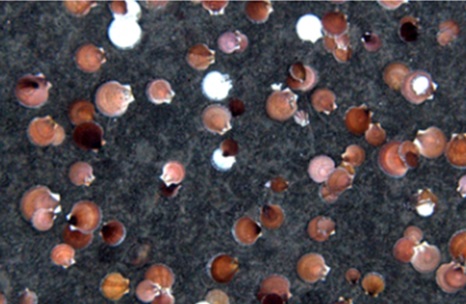
Fisheries Survival Fund Calls for Reevaluation of Draft PEIS on Offshore Wind Development Impacts on Scallop Fisheries in the New York Bight
The Fisheries Survival Fund (FSF) has submitted to the Bureau of Ocean Energy Management (BOEM) regarding the Draft Programmatic Environmental Impact Statement (Draft PEIS) for the New York Bight Wind Energy Area. The FSF, representing the majority of full-time Limited Access scallop fishermen on the East Coast, has raised significant concerns over the inadequacies of the Draft PEIS in addressing the impacts of offshore wind development on scallop fisheries, which are among the most valuable federally-managed commercial fisheries in the United States. The FSF argues that the Draft PEIS, while prepared under the National Environmental Policy Act (NEPA) and Outer Continental Shelf Lands Act (OCSLA), fails to adequately mitigate the impacts of offshore wind development on the Mid-Atlantic scallop resource and does not sufficiently reduce wind farm interference with scallop fishing activities. more, >>click to read<< 06:55
Oregon: Fishing group reacts to BOEM news on offshore wind
 Despite overwhelming opposition from tribes, fishing organizations and coastal communities, the Bureau of Ocean Energy Management (BOEM) announced the release of the final wind energy areas (WEAs) off Oregon’s south coast today. The WEAs remain unchanged from the draft areas released earlier this year. State agencies, fishermen, environmentalists, state legislators and others raised significant concerns about the draft WEAs, apparently to no avail. “This is a slap in the face to the many stakeholders who have been trying to engage with BOEM for the last few years,” said Heather Mann, Director of the Midwater Trawlers Cooperative. “BOEM is a rogue federal agency pushing a dangerous agenda largely unchecked. BOEM will stop at nothing until our oceans are littered with wind turbines and all just to meet an arbitrary political deadline.” more, >>click to read<< 10:24
Despite overwhelming opposition from tribes, fishing organizations and coastal communities, the Bureau of Ocean Energy Management (BOEM) announced the release of the final wind energy areas (WEAs) off Oregon’s south coast today. The WEAs remain unchanged from the draft areas released earlier this year. State agencies, fishermen, environmentalists, state legislators and others raised significant concerns about the draft WEAs, apparently to no avail. “This is a slap in the face to the many stakeholders who have been trying to engage with BOEM for the last few years,” said Heather Mann, Director of the Midwater Trawlers Cooperative. “BOEM is a rogue federal agency pushing a dangerous agenda largely unchecked. BOEM will stop at nothing until our oceans are littered with wind turbines and all just to meet an arbitrary political deadline.” more, >>click to read<< 10:24Oregon fishermen, tribes angered by surprise announcement on offshore wind energy areas
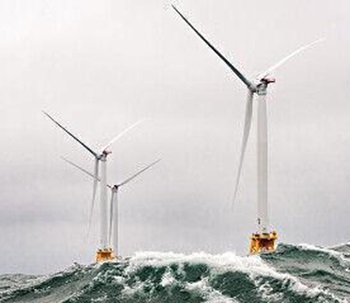 Federal officials say Oregon’s wind energy areas were developed “following extensive engagement and feedback from the state, Tribes, local residents, ocean users, federal government partners, and other members of the public” and are based on reducing conflicts with ocean users, particularly commercial fishermen. The areas avoid 98% of the locations recommended for exclusion due to their importance as commercial fishing grounds, they said. But local groups representing fishermen and Indigenous communities said that narrative is inaccurate and the federal government’s engagement with local communities was perfunctory at best, failing to take into account suggested impacts on local fishing areas, the environment and views that are sacred to tribes. The groups said the announcement caught them by surprise since Gov. Tina Kotek had asked the federal agency last June to pause identifying and leasing offshore wind areas so the state could fully evaluate potential impacts on the environment and economy. more, >>click to read<< 10:07
Federal officials say Oregon’s wind energy areas were developed “following extensive engagement and feedback from the state, Tribes, local residents, ocean users, federal government partners, and other members of the public” and are based on reducing conflicts with ocean users, particularly commercial fishermen. The areas avoid 98% of the locations recommended for exclusion due to their importance as commercial fishing grounds, they said. But local groups representing fishermen and Indigenous communities said that narrative is inaccurate and the federal government’s engagement with local communities was perfunctory at best, failing to take into account suggested impacts on local fishing areas, the environment and views that are sacred to tribes. The groups said the announcement caught them by surprise since Gov. Tina Kotek had asked the federal agency last June to pause identifying and leasing offshore wind areas so the state could fully evaluate potential impacts on the environment and economy. more, >>click to read<< 10:07
Rep. Andy Harris hosts anti-wind hearing in Ocean City ahead of final authorization of US WIND project
 US Representative Andy Harris hosted a hearing in Ocean City Saturday to push back against efforts from US WIND to develop offshore wind power off the coast of Ocean City. Rep. Harris tells 47ABC he is opposed to projects proposed both by Orsted and US WIND, but the event focused on the US WIND plan that is in its final approval stage from the Bureau of Ocean Energy Management (BOEM). “Once you you drive these out, the pilings and you put these windmills up, they’re going to be there a long time,”Rep. Harris said. Ocean City Mayor Rick Meehan says they do not support it the measure moving forward, citing damage to their local industries. “You have the concerns of the commercial fishermen, the recreational fishermen, the environment, environmentalists, there are so many there are so many more questions than answers,” Meehan said. more, >>click to read<< 19:43
US Representative Andy Harris hosted a hearing in Ocean City Saturday to push back against efforts from US WIND to develop offshore wind power off the coast of Ocean City. Rep. Harris tells 47ABC he is opposed to projects proposed both by Orsted and US WIND, but the event focused on the US WIND plan that is in its final approval stage from the Bureau of Ocean Energy Management (BOEM). “Once you you drive these out, the pilings and you put these windmills up, they’re going to be there a long time,”Rep. Harris said. Ocean City Mayor Rick Meehan says they do not support it the measure moving forward, citing damage to their local industries. “You have the concerns of the commercial fishermen, the recreational fishermen, the environment, environmentalists, there are so many there are so many more questions than answers,” Meehan said. more, >>click to read<< 19:43
BOEM Aims to Control Offshore Wind Developments’ Risk to Right Whales
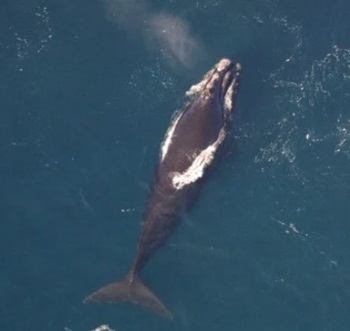 In advance of future offshore wind development in the New York Bight, the Bureau of Ocean Energy Management is preparing a region-wide environmental impact statement, paving the way for faster federal permitting of each individual project down the road. If built out, the future projects would mean the installation of about 1,100 turbines, 22 offshore substations and 1,600 miles of subsea cable. Without mitigation, BOEM expects the development of six offshore wind farms would have a “major” impact on right whales because of the noise from pile driving, blasting of unexploded ordnance, entanglement in abandoned gear and vessel strikes. North Atlantic right whales are so endangered that each individual death has a substantial impact, and additional losses cannot be absorbed – so BOEM wants to control the risk. more, >>click to read<< 09:15
In advance of future offshore wind development in the New York Bight, the Bureau of Ocean Energy Management is preparing a region-wide environmental impact statement, paving the way for faster federal permitting of each individual project down the road. If built out, the future projects would mean the installation of about 1,100 turbines, 22 offshore substations and 1,600 miles of subsea cable. Without mitigation, BOEM expects the development of six offshore wind farms would have a “major” impact on right whales because of the noise from pile driving, blasting of unexploded ordnance, entanglement in abandoned gear and vessel strikes. North Atlantic right whales are so endangered that each individual death has a substantial impact, and additional losses cannot be absorbed – so BOEM wants to control the risk. more, >>click to read<< 09:15
Nantucket’s Rich Are Losing the Battle to Keep Wind Power Out of Their Backyards
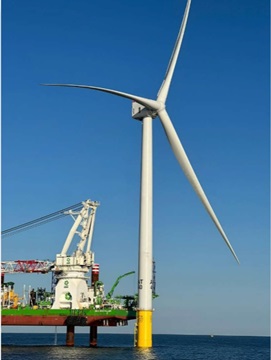 A newly erected wind turbine off the coast of the pristine sandy beaches of Nantucket rises about 850 feet from the ocean surface, higher than any building in Boston, spinning blades about 350 feet long. It’s a marvel of human ingenuity, a shot at a carbon-free future — and the scourge of wealthy denizens of Nantucket and Martha’s Vineyard. A raft of lawsuits from residents and fishing industry groups have complained about everything from obstructed views to marine life hazards and disruptions to whales. But the energy company Avangrid completed the first of 62 giant wind turbines last month, promising enough juice to power more than 400,000 homes and business in Massachusetts. >>click to read<< 10:51
A newly erected wind turbine off the coast of the pristine sandy beaches of Nantucket rises about 850 feet from the ocean surface, higher than any building in Boston, spinning blades about 350 feet long. It’s a marvel of human ingenuity, a shot at a carbon-free future — and the scourge of wealthy denizens of Nantucket and Martha’s Vineyard. A raft of lawsuits from residents and fishing industry groups have complained about everything from obstructed views to marine life hazards and disruptions to whales. But the energy company Avangrid completed the first of 62 giant wind turbines last month, promising enough juice to power more than 400,000 homes and business in Massachusetts. >>click to read<< 10:51
Newport, Block Island preservation groups sue to stop offshore wind farms
 Filed in the U.S. District Court for the District of Columbia, two separate appeals against the approvals were also filed by the Southeast Lighthouse Foundation, based on Block Island. Both organizations are being represented by Washington D.C.-based law firm Cultural Heritage Partners PLLC. The four filings assert a case of regulatory capture that led the U.S. Department of Interior and Bureau of Ocean Energy Management to “shirking its responsibility to the public and allowing corporate energy developers to set the terms for permitting,” and asks the court to issue a construction injunction and find the developers violated federal laws and regulations governing energy development, including the National Environmental Policy Act and National Historic Preservation Act. >>click to read<< 09:52
Filed in the U.S. District Court for the District of Columbia, two separate appeals against the approvals were also filed by the Southeast Lighthouse Foundation, based on Block Island. Both organizations are being represented by Washington D.C.-based law firm Cultural Heritage Partners PLLC. The four filings assert a case of regulatory capture that led the U.S. Department of Interior and Bureau of Ocean Energy Management to “shirking its responsibility to the public and allowing corporate energy developers to set the terms for permitting,” and asks the court to issue a construction injunction and find the developers violated federal laws and regulations governing energy development, including the National Environmental Policy Act and National Historic Preservation Act. >>click to read<< 09:52
One of RI’s top environmentalists is suing to block offshore wind project
 Trudy Coxe, the former head of Save the Bay and once the top environmental official in the Commonwealth of Massachusetts, dropped a bombshell on Wednesday afternoon. In her role as the head of the Newport Preservation Society (NPS), Coxe announced that her organization has filed a massive federal lawsuit to block the construction the offshore wind project off the coast of Rhode Island. NPS manages the public-facing mansions in Newport, such as The Breakers and Rosecliff, to name a few. The Preservation Society filed the suit in the U.S. District Court for the District of Columbia.>>click to read<< 11:55
Trudy Coxe, the former head of Save the Bay and once the top environmental official in the Commonwealth of Massachusetts, dropped a bombshell on Wednesday afternoon. In her role as the head of the Newport Preservation Society (NPS), Coxe announced that her organization has filed a massive federal lawsuit to block the construction the offshore wind project off the coast of Rhode Island. NPS manages the public-facing mansions in Newport, such as The Breakers and Rosecliff, to name a few. The Preservation Society filed the suit in the U.S. District Court for the District of Columbia.>>click to read<< 11:55
Politicians Come Out Against Gulf of Maine Offshore Wind Proposal
 U.S. Sens. Susan Collins and Angus King, Reps. Jared Golden and Chellie Pingree, and Maine Gov. Janet Mills have sent a letter to the Bureau of Ocean Energy Management (BOEM), urging them to completely exclude Lobster Management Area 1 (LMA 1) from the Wind Energy Area (WEA) for potential wind power development in the Gulf of Maine. The lawmakers and governor assert that “clean energy can offer economic and environmental benefits for Maine that must be pursued prudently and responsibly with a commitment to minimizing to the greatest extent possible the impact on fishermen, recreation and other crucial ocean uses that are critical to Maine.” >>click o read<< 07:14
U.S. Sens. Susan Collins and Angus King, Reps. Jared Golden and Chellie Pingree, and Maine Gov. Janet Mills have sent a letter to the Bureau of Ocean Energy Management (BOEM), urging them to completely exclude Lobster Management Area 1 (LMA 1) from the Wind Energy Area (WEA) for potential wind power development in the Gulf of Maine. The lawmakers and governor assert that “clean energy can offer economic and environmental benefits for Maine that must be pursued prudently and responsibly with a commitment to minimizing to the greatest extent possible the impact on fishermen, recreation and other crucial ocean uses that are critical to Maine.” >>click o read<< 07:14
Coalition files intent to sue federal agencies to stop whale-killing Virginia wind project
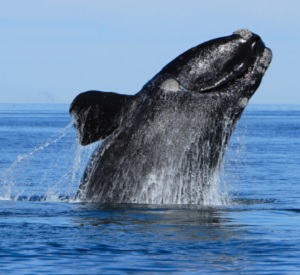 The Committee for a Constructive Tomorrow (CFACT) and The Heartland Institute today announced that they were filing with the Bureau of Ocean Energy Management (BOEM) and the National Marine Fisheries Service (NMFS) a 60 Day Notice of Intent to Sue letter for a violation of the Endangered Species Act. The violation is contained in a defective “biological opinion,” which authorizes the construction of the Virginia Offshore Wind Project (VOW). The 60-day notice is required by the Endangered Species Act (ESA) for parties who wish to commence litigation against BOEM for failure to provide adequate protection of the North Atlantic right whale and other endangered species. The North Atlantic right whale is listed as “critically endangered” by the governments of both the Commonwealth of Virginia and the United States. >>click to read<< 12:23
The Committee for a Constructive Tomorrow (CFACT) and The Heartland Institute today announced that they were filing with the Bureau of Ocean Energy Management (BOEM) and the National Marine Fisheries Service (NMFS) a 60 Day Notice of Intent to Sue letter for a violation of the Endangered Species Act. The violation is contained in a defective “biological opinion,” which authorizes the construction of the Virginia Offshore Wind Project (VOW). The 60-day notice is required by the Endangered Species Act (ESA) for parties who wish to commence litigation against BOEM for failure to provide adequate protection of the North Atlantic right whale and other endangered species. The North Atlantic right whale is listed as “critically endangered” by the governments of both the Commonwealth of Virginia and the United States. >>click to read<< 12:23
Stevenson: It’s time for public comments on offshore wind
 Planned offshore wind projects are three to five times as expensive as alternative options to reduce emissions, such as onshore wind, solar, carbon capture and advanced nuclear power. Offshore wind is an environmental wrecking ball. These projects will probably edge the critically endangered North American right whale to extinction. No studies have been conducted on the impacts on horseshoe crabs, despite projects being built atop the horseshoe crab preserve and in the flyway for the endangered red knot bird that depends on horseshoe crab eggs to survive its 9,000-mile migration. Commercial fishing will abandon lease areas totaling an area on the East Coast equal to twice the size of New Jersey, if all planned projects are built. Vessel collisions will increase, while Coast Guard search-and-rescue operations will be hampered, possibly leading to human deaths. >>click to read<< 06:22
Planned offshore wind projects are three to five times as expensive as alternative options to reduce emissions, such as onshore wind, solar, carbon capture and advanced nuclear power. Offshore wind is an environmental wrecking ball. These projects will probably edge the critically endangered North American right whale to extinction. No studies have been conducted on the impacts on horseshoe crabs, despite projects being built atop the horseshoe crab preserve and in the flyway for the endangered red knot bird that depends on horseshoe crab eggs to survive its 9,000-mile migration. Commercial fishing will abandon lease areas totaling an area on the East Coast equal to twice the size of New Jersey, if all planned projects are built. Vessel collisions will increase, while Coast Guard search-and-rescue operations will be hampered, possibly leading to human deaths. >>click to read<< 06:22
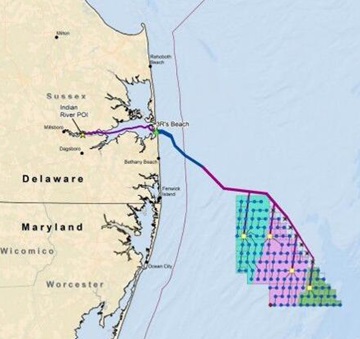
An Opportunity for Neighbors in Ocean City to Voice Opinions on Offshore Wind?
On Tuesday night, the Bureau of Ocean Energy Management held a public meeting at Ocean City Elementary. However, many thought it was a public hearing, which caused some confusion and frustration. By 5:00 p.m., hundreds of people had funneled into Ocean City Elementary, eager to voice any complaints or compliments. Ocean City’s Mayor, Rick Meehan, said the lack of opportunity to speak out loud did not allow the meeting to start off on the right foot. “They were mad and a lot of people left,” said Meehan. “They were very discouraged by the opportunity that was presented to them to speak on something that is very important to this area.” Commercial fishermen like Jimmy Hahn are worried about the future. “I’m scared to death that the windmills are going to kill our fishing industry,” said Hahn. Hahn said the lease area is the primary fishing spot out of Ocean City and is also used by fisherman from Delaware and New Jersey. >>click to read<< 15:54

Another legal challenge to NJ offshore wind farm project
In a lawsuit filed Tuesday in U.S. District Court in New Jersey, commercial fishing and tourism interests and a conservation group joined Cape May County in accusing federal agencies of ignoring and violating laws designed to protect the environment and marine life. The dispute is the latest that threatens to delay the project, which also faces stiff financial challenges that have led officials from Ørsted, a Danish company, to consider pulling out of building the 98-turbine project. Ørsted’s Ocean Wind I, a 1,100-megawatt project about 15 miles offshore from Atlantic City, is entangled in assorted court battles. Orsted has sued Cape May County and Ocean City over delays in obtaining permits while the state faces challenges over its approval of the project from local groups. >>click to read<< 07:09

Anti-Wind Farm Group Sues R.I. Coastal Agency Over Revolution Wind Approval
Green Oceans, the Rhode Island citizens group that fiercely opposes offshore wind farms, is in the midst of a civil lawsuit it has filed against the state Coastal Resources Management Council (CRMC), claiming the council violated the constitution, state regulations, and its own responsibilities when it approved the Revolution Wind farm in May. The lawsuit, being heard in Newport Superior Court, asks the court to vacate the CRMC’s decision, which, in effect, declared that the wind farm conforms to the state’s Ocean Special Area Management Plan (SAMP), provided that the developer, Revolution Wind LLC, takes some agreed-upon mitigating actions. Attorneys for the CRMC fired back, stating that private citizens have no legal standing to bring such a suit, that Green Oceans has not suffered injury because of the CRMC action, that the complaint was filed past deadline, and that Green Oceans was taking the action without an attorney, which is not allowed. >>click to read<< 11:02
Rhode Island fishermen fear offshore wind farm project could jeopardize thriving squid industry
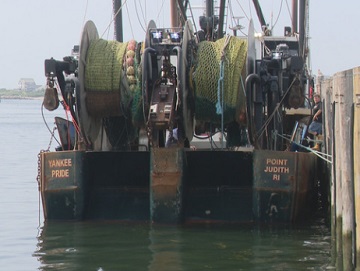 On the coast of Narragansett lies the pulse of the Rhode Island fishing industry. Dozens of boats travel to sea multiple times a day to reel in fish, which are then brought back to shore to be processed at fish houses and packaged for sale. Squid dominates the fishing industry in Rhode Island, but a group of fishermen worry a major wind farm project will put everything they work for at risk. The concerns prompted SeaFreeze to file a federal lawsuit in 2021 to stop the project, which will place 62 turbines off Martha’s Vineyard to power 400,000 homes. Construction is already well underway and by the end of the year, the installation could produce up to 300 megawatts of power. Video, photos, >>click to read<< 07:53
On the coast of Narragansett lies the pulse of the Rhode Island fishing industry. Dozens of boats travel to sea multiple times a day to reel in fish, which are then brought back to shore to be processed at fish houses and packaged for sale. Squid dominates the fishing industry in Rhode Island, but a group of fishermen worry a major wind farm project will put everything they work for at risk. The concerns prompted SeaFreeze to file a federal lawsuit in 2021 to stop the project, which will place 62 turbines off Martha’s Vineyard to power 400,000 homes. Construction is already well underway and by the end of the year, the installation could produce up to 300 megawatts of power. Video, photos, >>click to read<< 07:53






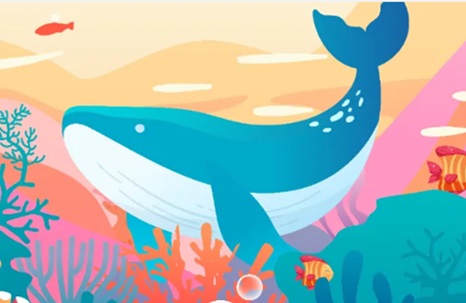

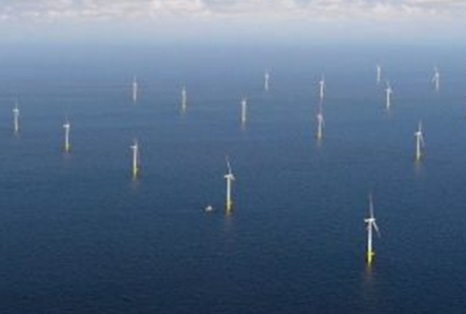




























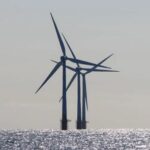




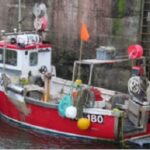
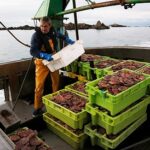
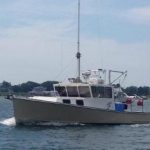

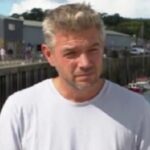




Fishermen submit hundreds of comments on leasing Gulf of Maine for offshore wind
During the 33-day comment period, BOEM held six online meetings Nov. 1-3 to discuss the draft areas and three proposed secondary areas not included in the draft, and to answer questions and hear feedback from specific stakeholder groups, such as commercial and recreational fishermen, environmental nonprofits and the shipping and transportation sector. So, what did everyone have to say? When it comes to commercial fisheries, gaps in the data that inform where WEAs will least conflict with fishing remain a top concern, as do the cables running the power to shore. Also of concern are certain quadrants included in the draft WEAs, which some at the meetings said are spawning areas for haddock and redfish. more, >>click to read<< 08:27
Share this post